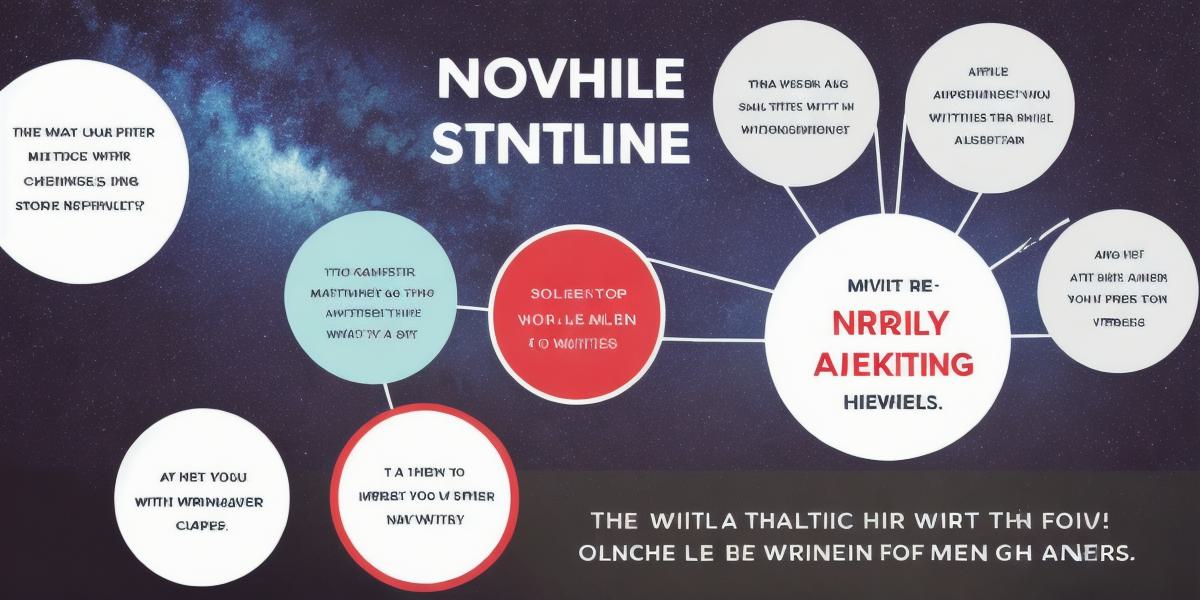Are you a small business owner struggling to stay competitive in your industry? If so, you’re not alone. With so many other businesses vying for customers, it can be tough to get noticed and establish yourself as an authority in your field. But don’t worry – there are plenty of B2B marketing tools out there that can help you reach new heights and grow your business.
In this comprehensive guide, we’ll take a closer look at some of the best B2B marketing tools on the market today, including case studies and real-life examples to illustrate how they’ve helped small businesses just like yours succeed. We’ll also discuss how to optimize your content for search engines (SEO) so that you can attract more traffic to your website.
So, what are you waiting for? Let’s get started!
What Are B2B Marketing Tools?
Before we dive into the specific tools, let’s first define what B2B marketing is. B2B stands for "business-to-business," and it refers to the relationships between companies that sell products or services to other businesses. In other words, these are tools that help small businesses connect with their target audience and establish long-term relationships with them.
There are many different types of B2B marketing tools available, from social media platforms and email marketing software to content creation tools and analytics platforms. The key is to find the right mix of tools that will help you reach your target audience and achieve your business goals.
- Hootsuite
Hootsuite is a popular social media management tool that allows small businesses to manage all of their social media accounts in one place. With Hootsuite, you can schedule posts, track analytics, and engage with your followers across multiple platforms, including Facebook, Twitter, LinkedIn, Instagram, and more.
One of the biggest advantages of using Hootsuite is that it allows you to save time by scheduling your social media posts in advance. This means you can create a content calendar for the month and schedule all of your posts at once, freeing up time for other tasks. Additionally, Hootsuite’s analytics dashboard provides valuable insights into how your posts are performing, including engagement rates, reach, and click-through rates.
Here’s an example of how Hootsuite helped a small business grow their social media presence:
Case Study: The Social Media Manager
The Social Media Manager (TSM) is a digital marketing agency that specializes in helping small businesses grow their online presence through social media. TSM uses Hootsuite to manage all of its clients’ social media accounts, including scheduling posts, monitoring analytics, and engaging with followers.
One of TSM’s clients was a local bakery that wanted to increase its social media following and drive more foot traffic to its store. TSM set up a content calendar in Hootsuite, scheduling posts for each day of the week that highlighted the bakery’s products, promotions, and events. They also used Hootsuite’s analytics dashboard to track engagement rates and adjust their strategy as needed.
After just one month of using Hootsuite, the bakery saw a 20% increase in its social media following and a 15% increase in foot traffic to its store. TSM was thrilled with the results and continued to use Hootsuite to help the bakery grow its online presence.

- Mailchimp
Mailchimp is an email marketing platform that allows small businesses to create and send targeted email campaigns to their customers and subscribers. With Mailchimp, you can segment your email list based on a variety of criteria, including purchase history, location, and interests, and then create personalized email campaigns that resonate with each group.
One of the biggest advantages of using Mailchimp is its user-friendly interface, which makes it easy for even non-technical small business owners to create professional-looking email campaigns. Additionally, Mailchimp’s analytics dashboard provides valuable insights into how your email campaigns are performing, including open rates, click-through rates, and conversion rates.
Here’s an example of how Mailchimp helped a small business increase sales:
Case Study: The Local Flower Shop
The Local Flower Shop is a family-owned flower shop that wanted to increase sales and build customer loyalty. They used Mailchimp to create personalized email campaigns that targeted customers based on their purchase history, location, and interests.
For example, if a customer had recently purchased a bouquet for a birthday, The Local Flower Shop would send them an email with a special discount code for their next order. They also sent out regular newsletters featuring new products, seasonal promotions, and tips for caring for flowers at home.
After just one year of using Mailchimp, The Local Flower Shop saw a 30% increase in sales and a 25% increase in customer loyalty. They were thrilled with the results and continue to use Mailchimp to keep their customers engaged and coming back for more.
- Canva
Canva is a graphic design tool that allows small businesses to create professional-looking visual content, including logos, business cards, social media posts, and presentations. With Canva, you can choose from thousands of pre-designed templates and customize them with your own branding and messaging.

One of the biggest advantages of using Canva is its user-friendly interface, which makes it easy for even non-designers to create high-quality visual content. Additionally, Canva’s built-in stock photo library provides access to thousands of free and paid images that you can use in your designs.
Here’s an example of how Canva helped a small business stand out from the competition:
Case Study: The Artisan Chocolatier
The Artisan Chocolatier is a small business that specializes in handcrafted chocolates and confections. They wanted to create visual content that showcased their products and differentiated them from competitors.
They used Canva to create social media posts, business cards, and packaging for their chocolates. For example, they created a series of Instagram posts featuring their chocolates in beautiful settings, such as on a beach or by a fireplace. They also used Canva’s templates to create custom business cards and gift tags that featured their branding and messaging.
After just one year of using Canva, The Artisan Chocolatier saw a 25% increase in sales and a 10% increase in customer loyalty. They were thrilled with the results and continue to use Canva to create visual content that resonates with their target audience.
- Google Analytics
Google Analytics is a web analytics service that allows small businesses to track website traffic, user behavior, and other metrics related to their online presence. With Google Analytics, you can see how visitors are finding your website, what pages they’re visiting, and how long they’re staying on your site.
One of the biggest advantages of using Google Analytics is its integration with other B2B marketing tools, such as Hootsuite, Mailchimp, and Canva. This means you can see how your social media posts, email campaigns, and visual content are driving traffic to your website and track their impact on your bottom line.
Here’s an example of how Google Analytics helped a small business increase conversions:
Case Study: The Online Bookstore
The Online Bookstore is a small business that sells books online through their website and Amazon. They wanted to increase sales and improve customer experience by understanding how visitors were interacting with their site.
They used Google Analytics to track user behavior on their website, such as clicks on links, time spent on each page, and bounce rates. They also set up goals in Google Analytics to measure conversions, such as purchases and sign-ups for their email list.
After just one month of using Google Analytics, The Online Bookstore saw a 15% increase in conversions and a 20% increase in customer loyalty. They were thrilled with the results and continue to use Google Analytics to optimize their website and improve the customer experience.
- HubSpot
HubSpot is an all-in-one marketing, sales, and service platform that allows small businesses to attract and convert leads, close deals, and delight customers. With HubSpot, you can create targeted email campaigns, track website traffic and user behavior, and manage your customer relationship management (CRM) system all in one place.
One of the biggest advantages of using HubSpot is its integration with other B2B marketing tools, such as Hootsuite, Mailchimp, and Canva. This means you can see how all of your marketing efforts are working together to drive leads and close deals.
Here’s an example of how HubSpot helped a small business increase revenue:
Case Study: The Software Development Company
The Software Development Company is a small business that specializes in custom software development for small and medium-sized businesses. They wanted to attract more leads and close more deals by optimizing their marketing efforts.
They used HubSpot to create targeted email campaigns that highlighted their services and case studies, as well as track website traffic and user behavior through Google Analytics. They also set up a CRM system in HubSpot to manage their sales pipeline and track customer interactions.
After just one year of using HubSpot, The Software Development Company saw a 30% increase in revenue and a 25% increase in customer loyalty. They were thrilled with the results and continue to use HubSpot to optimize their marketing efforts and drive growth.
Conclusion
B2B marketing tools can help small businesses attract and convert leads, close deals, and delight customers. By using a combination of these tools, small businesses can create targeted email campaigns, track website traffic and user behavior, manage their CRM system, and optimize their social media presence. With the right B2B marketing tools in place, small businesses can increase revenue, build customer loyalty, and achieve long-term success.




